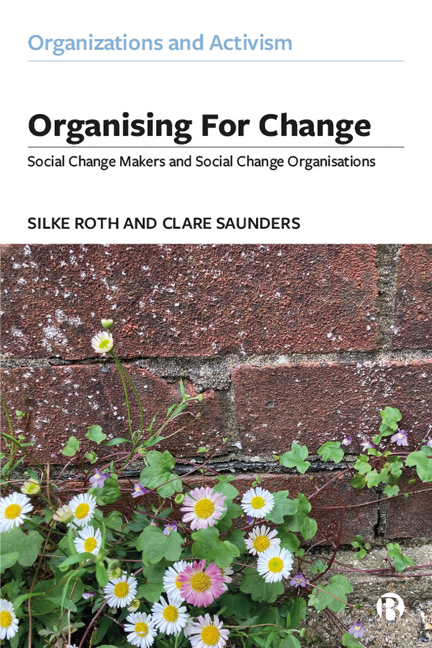Book contents
- Frontmatter
- Dedication
- Contents
- Series Editors’ Preface
- List of Figures and Tables
- Acknowledgements
- Introduction
- 1 What Are Social Change Makers and Social Change Organisations?
- 2 The Big Picture: Social Change Makers and Social Change Organisations in Historically Variable Contexts
- 3 Ways of Making Change
- 4 No Such Thing as a Free Gift: The Sources and Consequences of Resource Choices
- 5 People Making Change
- 6 Collaboration, Competition and Conflict
- 7 Outcomes of Social Change Making
- Conclusions: Organising for Change
- Appendix: Our Projects
- Notes
- References
- Index
6 - Collaboration, Competition and Conflict
Published online by Cambridge University Press: 28 March 2024
- Frontmatter
- Dedication
- Contents
- Series Editors’ Preface
- List of Figures and Tables
- Acknowledgements
- Introduction
- 1 What Are Social Change Makers and Social Change Organisations?
- 2 The Big Picture: Social Change Makers and Social Change Organisations in Historically Variable Contexts
- 3 Ways of Making Change
- 4 No Such Thing as a Free Gift: The Sources and Consequences of Resource Choices
- 5 People Making Change
- 6 Collaboration, Competition and Conflict
- 7 Outcomes of Social Change Making
- Conclusions: Organising for Change
- Appendix: Our Projects
- Notes
- References
- Index
Summary
The Coalition of Labour Union Women (CLUW), which was formed in Chicago in 1974, to give voice to women in the male-dominated US labour movement (which we introduced in Chapter 1) is also a good case through which to introduce our chapter on the interaction between different SCOs. As we already noted, the founding members of the organisation came from a variety of backgrounds. Many had been long-standing trade union members, others came from the second-wave women’s movement and wished to improve the working conditions of non-unionised women, some were also involved in the civil rights and student movements and other causes. What united them was the desire to improve women’s working conditions, but founding members disagreed about the best strategy. Given the low unionisation rate of women and female-dominated sectors of the labour market, initially there was some debate whether this would be best achieved within the context of the trade unions or in an autonomous organisation. The view that CLUW would have more impact acting within the framework of the trade union federation AFL-CIO (American Federation of Labor and Congress of Industrial Organizations) prevailed. This decision meant that founding members decided that the best strategy of supporting (non)unionised women was from within the labour movement. In order to do this, they sought to unionise women who had not yet joined trade unions, bringing women into union leadership positions, and by adding women’s issues on the agenda of trade unions. These efforts are characterised by collaboration with other organisations (trade unions, women’s organisations) and conflict within the organisation. Through solving the internal conflicts, CLUW became a bridging organisation between the women’s movement and the labour movement by framing ‘women’s issues’ (day care, pay equity, sexual harassment, reproductive rights) as ‘workers’ issues’ (pay, working conditions) and ‘workers’ issues’ as ‘women’s issues’ (Roth, 2003).
While CLUW represents a successful example of an SCO that was able to bridge women’s and labour issues, this is not always the case.
- Type
- Chapter
- Information
- Organising for ChangeSocial Change Makers and Social Change Organisations, pp. 132 - 153Publisher: Bristol University PressPrint publication year: 2023



